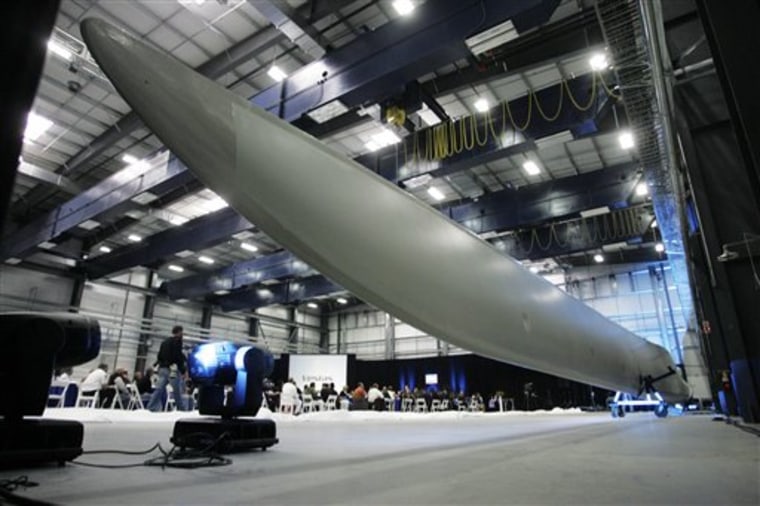The fledgling renewable energy industry has grown steadily over much of the past decade, adding jobs at more than twice the national rate, according to a Pew Charitable Trusts study released Wednesday.
Solar and wind-power companies, energy-efficient light bulb makers, environmental engineering firms and others expanded their work force by 9.1 percent from 1998 to 2007, the latest year available, according to Pew.
The average job growth in all industries was 3.7 percent during the same period.
The entire energy sector has experienced growth in recent years as well, according to the Bureau of Labor. Bureau data shows coal mining jobs jumped 16 percent from 2003 to 2009. Oil and gas extraction jobs jumped 28 percent.
The Pew study does not include employment data from the past 18 months, a volatile period for the energy industry.
Since the data was collected, the government has said it would pump billions into renewable energy and effiency programs. The banking meltdown made it nearly impossible to raise cash and oil prices have collapsed.
Alternative energy companies have been hit hard by the recession, with a string of bankruptcies in the ethanol industry and layoffs in the wind-power industry.
Lori Grange, Pew’s interim deputy director, said that while green industries will certainly benefit from the influx of billions in stimulus dollars, the report shows that the clean energy sector has proven itself sustainable.
States like California, Texas, Florida, and New York continue to employ the most people in the industry. However, states experiencing the largest growth rates were Idaho, Nebraska, South Dakota and Wyoming, according to the report.
Michigan, which has lost hundreds of thousands of manufacturing jobs, saw a 10.7 percent increase in clean energy jobs from 1998 to 2007.
That is not to say that clean energy jobs have kept pace with overall job losses.
Pew counted 22,674 clean energy jobs in Michigan in 2007. To put that into perspective, Michigan lost 38,400 jobs in April alone.
Many of the new manufacturing jobs do not pay as well as traditional union jobs, either, yet workers who have made the shift say the industries are moving in different directions.
One cast off from the auto industry is Bob Mamo, 50, who was director of business development for a Dearborn, Mich., auto parts supplier until he was laid off in November. He was in the industry for 20 years.
Last month, he landed a job as vice president of manufacturing for Free Flow Power, a hydropower company based in Gloucester, Mass.
The auto industry “just looked like it was going in the wrong direction,” he said. “Green energy is definitely on the upswing. Green energy was what I was really after.”
Liesl Clark, deputy director for Michigan’s Department of Energy, Labor and Economic Growth, said the state is doing what it can to help manufacturers shift operations to supply parts for wind turbines, such as gear boxes and drive trains.
For its study, Pew used private jobs data that included information about employers, and Pew researchers spent nearly a year determining which ones could be considered part of the clean energy economy.
“Our numbers are probably conservative,” said Kil Huh, who directed the study. “If we couldn’t identify as part of green energy, it wasn’t part of our count.”
The Pew jobs data was dominated by environmental engineering firms and other pollution cleanup specialists that have been around for years. But the report showed that the fastest growing areas include companies that make hybrid diesel buses, traffic monitoring software, liquid biofuels, and jobs related to solar and wind energy.
“The explosive growth is really in clean energy,” Huh said.
